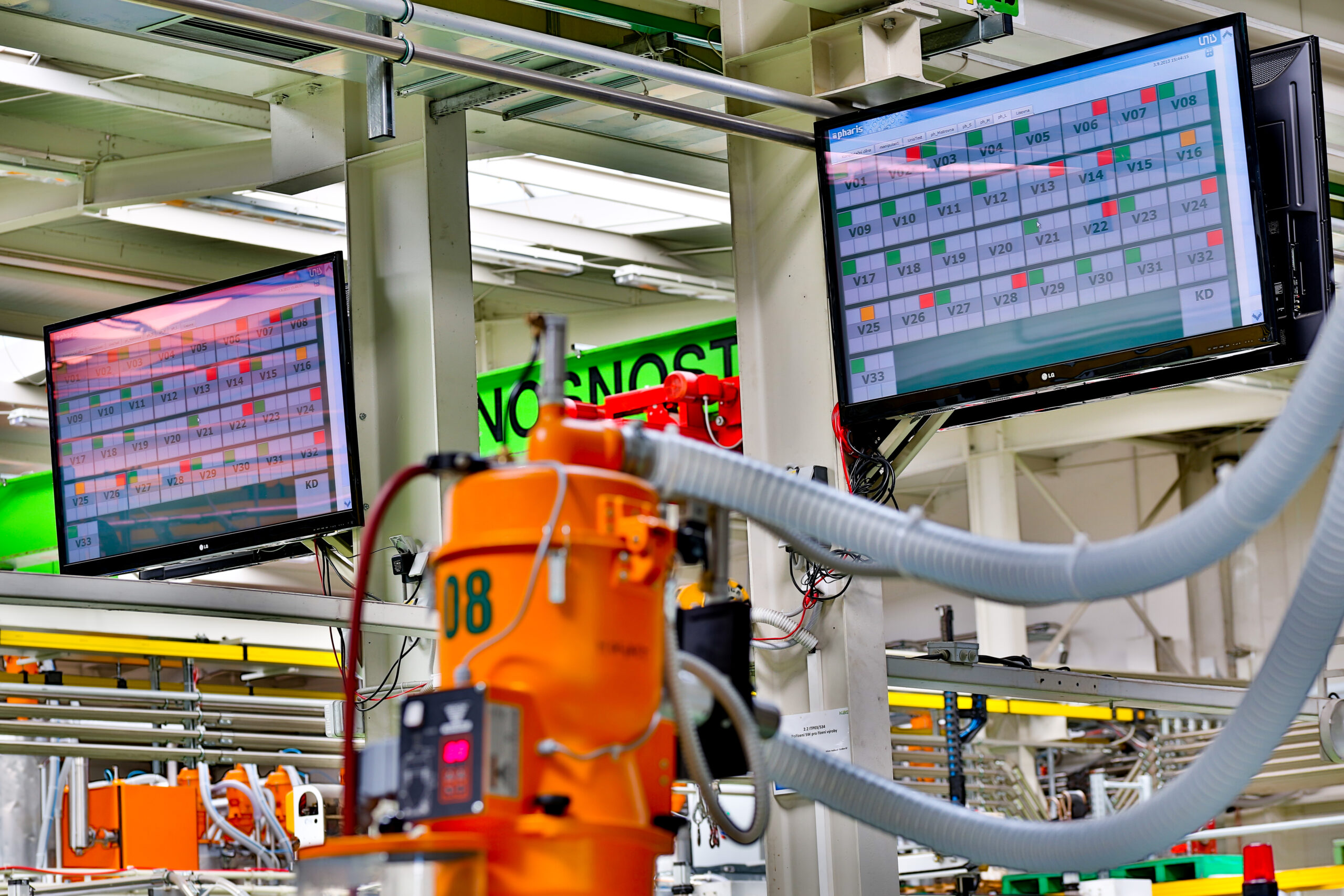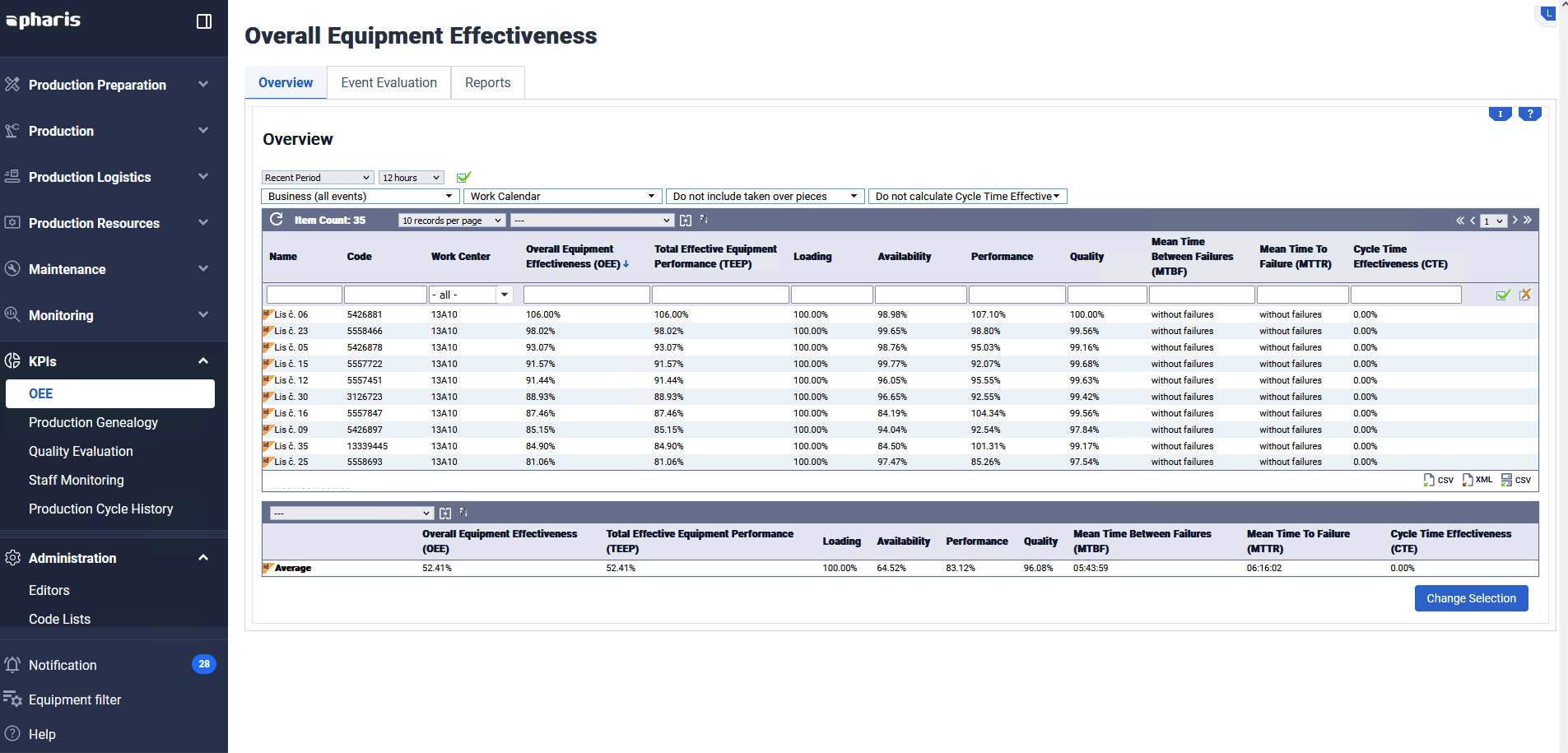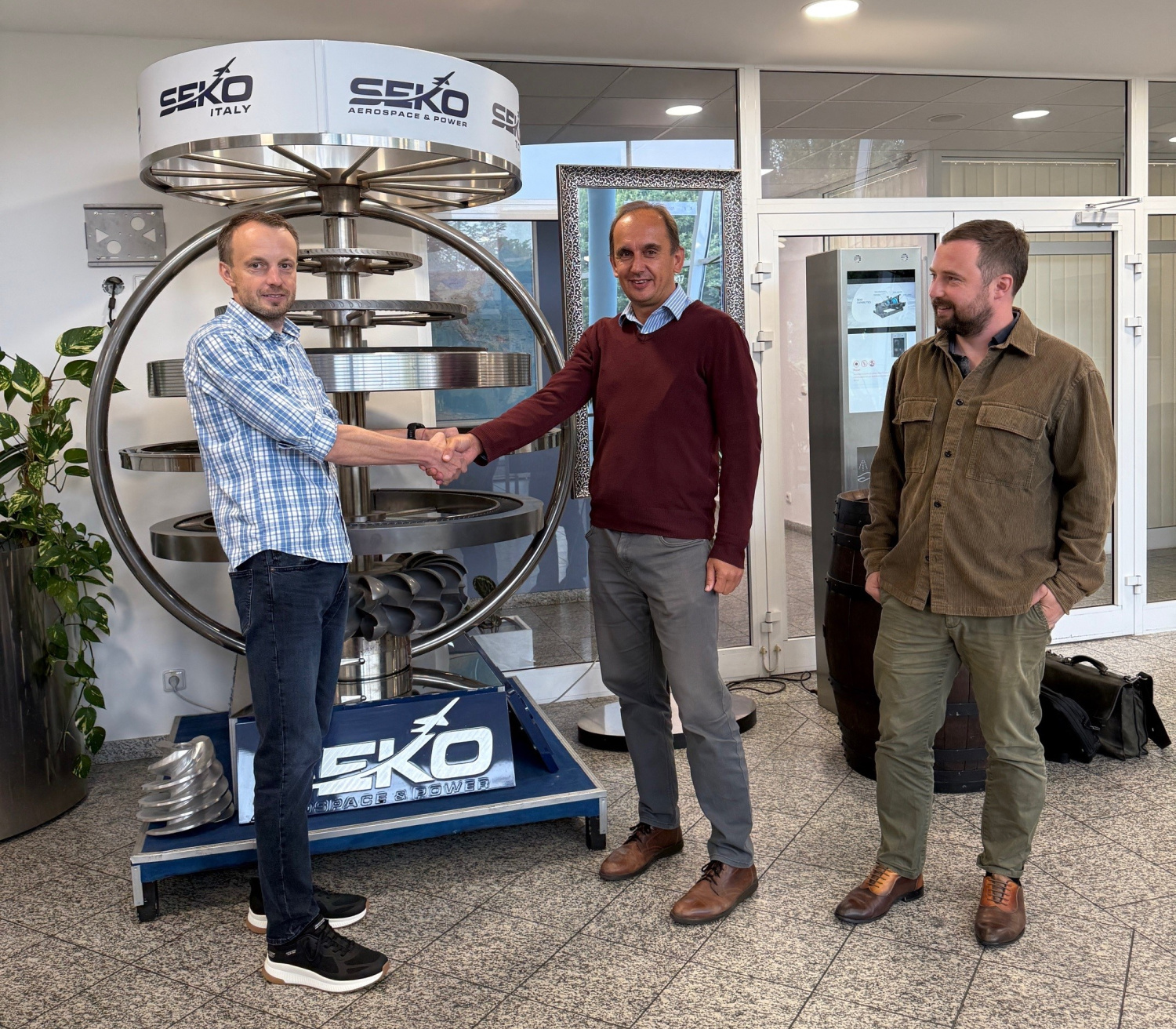Manufacturing companies today face a wide range of pressures – rising costs, labor shortages, and the need to increase efficiency and quality. Add to that a volatile market and high uncertainty. In such an environment, having full control over production is a matter of survival. And that’s exactly what MES – Manufacturing Execution System – makes possible. A tool that fundamentally changes the way production is managed. A tool rightly considered one of the best investments in the future of a manufacturing enterprise.

Data as the foundation
Every decision and every aspect of management – in life or business – is based on data. In manufacturing, this is even more true. Thousands of parallel processes, numerous technologies, shift operations, dozens of people. Production is a living organism that cannot be efficiently managed without quality data. And yet, we still see companies relying on manually entered data in spreadsheets or ERP modules. The result? Distorted information, an illusion of efficiency, and poor decision-making.
MES changes this – collecting data automatically, in real time, directly from machines, operator panels, and assembly stations. No human input, no errors. Customers who implement MES often report the same surprise: once the system goes live, KPIs like OEE drop. But not because production has worsened – quite the opposite. For the first time, they’re seeing the real situation, free from assumptions and inaccuracies.
And that’s the first and most crucial success – having data you can trust. Data that is always available. And data you can start building on.
Data evaluation and full transparency
With data in hand, we can evaluate it. We can accurately measure key performance indicators (KPIs) like OEE or SMED. We can track trends, compare shifts, machines, and products. These tools give management a solid foundation for decision-making. They know where losses occur, where there’s room for improvement. Most importantly, they can act quickly and effectively.
Data collection, analysis, and visualization – all of this brings not only greater oversight, but also cost savings. Manual data collection and evaluation is costly, slow, and often inaccurate. MES solves this problem elegantly and automatically.
Real-time production management: Workflow execution
But MES doesn’t stop there. In fact, its true power lies in the word “execution”. MES enables real-time production management. That means setting automatic rules, defining workflows, and responding instantly to arising situations.

Here are a few concrete examples:
 Downtime: MES can automatically record each downtime event, assign a reason, and trigger an alert or escalation. This provides not only a time overview but also a deeper understanding of the causes of inefficiency – leading to savings, especially through SMED optimization.
Downtime: MES can automatically record each downtime event, assign a reason, and trigger an alert or escalation. This provides not only a time overview but also a deeper understanding of the causes of inefficiency – leading to savings, especially through SMED optimization.
 Quality: Through control plans and scenarios (e.g., “first piece release”), production quality improves. If limits are exceeded, MES can automatically alert quality staff, stop a machine, or record the response time to the issue.
Quality: Through control plans and scenarios (e.g., “first piece release”), production quality improves. If limits are exceeded, MES can automatically alert quality staff, stop a machine, or record the response time to the issue.
 Paperless production: Eliminating paper documentation saves materials, reduces errors, and simplifies operator tasks. Everyone knows exactly what to do – clearly and up to date.
Paperless production: Eliminating paper documentation saves materials, reduces errors, and simplifies operator tasks. Everyone knows exactly what to do – clearly and up to date.
 Advanced Production Planning (APS): MES plans production smartly – based on real-time data on machines, tools, workers, materials, and historical production data. Add in alternative machines, production methods, material-based order grouping, and more – and you have a situation that simply can’t be effectively managed manually or without APS as part of MES.
Advanced Production Planning (APS): MES plans production smartly – based on real-time data on machines, tools, workers, materials, and historical production data. Add in alternative machines, production methods, material-based order grouping, and more – and you have a situation that simply can’t be effectively managed manually or without APS as part of MES.
 Error reduction: MES terminals guide operators step-by-step, significantly reducing the risk of errors, even for less-skilled workers.
Error reduction: MES terminals guide operators step-by-step, significantly reducing the risk of errors, even for less-skilled workers.
 Training: Digital documentation, video tutorials, and multi-language support simplify onboarding of new employees and reduce training costs.
Training: Digital documentation, video tutorials, and multi-language support simplify onboarding of new employees and reduce training costs.
 Refinement of material consumption: MES enables precise tracking of consumption, including excess usage of materials and semi-finished products. This increases transparency of actual consumption and helps optimize raw material costs.
Refinement of material consumption: MES enables precise tracking of consumption, including excess usage of materials and semi-finished products. This increases transparency of actual consumption and helps optimize raw material costs.
Each of these points means improvement. Each one means more money saved. Each one means success.
A chance for systemic change
Implementing an MES system isn’t just about buying software. It’s a chance for a systemic transformation. Many companies discover during this process that some of their “old ways” no longer work. And suddenly, a better way becomes possible. Even if MES helps solve just one major problem, it’s an investment that pays off. But in reality, it usually solves many more.
Don’t stop. Keep going. Keep improving.
Implementing MES is not the end – it’s just the beginning of a continuous improvement journey. Once you have the data, the tools, and the insights, the next step is to ask: what’s next? Which process can be redefined? Which workflow can be expanded? What else can be connected to the MES?
This approach opens doors to previously unthinkable possibilities – from advanced user scenarios to predictive maintenance to the integration of artificial intelligence. MES is your ticket to the world of modern production management. A world where technology makes sense. Where data is more than just numbers – it becomes a tool for growth.

In summary: MES is an investment that pays off
In a time when uncertainty is the only certainty, MES is an investment that gives manufacturing companies a fighting chance – to keep their processes under control, respond quickly, improve efficiency, and make decisions based on reliable data. Whether it’s daily operations or strategic planning, MES is the key to staying one step ahead.
Whoever can manage production in real time holds the future in their hands. And that is the greatest value of an MES system. YOUR NEXT MOVE…
Tomáš Hradský, CEO, PHARIS



